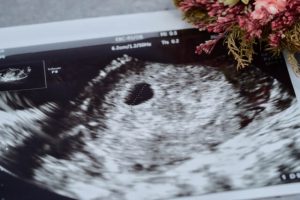- Introduction
- Diagnosis and Treatment Flow of Infertility
- What is Artificial Insemination?
- Flow of Artificial Insemination
- Who is Suitable for Artificial Insemination?
- For Those Considering Artificial Insemination
- Signs of Successful Pregnancy with Artificial Insemination
- Probability of Chromosomal Abnormalities in the Fetus Due to Artificial Insemination
Introduction
Artificial insemination is a reproductive medical technique where sperm or eggs are artificially collected to facilitate conception (pregnancy) as part of infertility treatment. Since April 2022, some infertility treatments have become eligible for insurance coverage, making them more accessible to those who previously refrained from pursuing pregnancy due to high costs.
Insurance-covered infertility treatments include “artificial insemination,” “timing method,” “in vitro fertilization,” and “intracytoplasmic sperm injection,” recognized by various professional societies for their safety and efficacy. This article explains the mechanism of artificial insemination, signs of pregnancy after artificial insemination, and differences from other reproductive medical techniques.
Diagnosis and Treatment Flow of Infertility
Infertility has various causes, which can affect either one or both partners in a couple.
Infertility is generally defined as the condition where a couple has unprotected sexual intercourse for over a year without achieving pregnancy. After diagnostic testing for both men and women by a physician, treatment for the causes of infertility is pursued. However, for women aged 35 and older, the likelihood of pregnancy decreases with age, making early reproductive treatments like artificial insemination necessary.
Main Causes of Infertility
- Male infertility such as azoospermia
- Ovulation disorders
- Disorders of the uterus, fallopian tubes, and pelvic cavity
- Abnormal cervical mucus
- Age (35 years and older)
Insurance-Covered Infertility Treatments
〈General Infertility Treatments〉
- Artificial insemination: Infertility treatment where healthy motile sperm are collected and injected into the uterus.
- Timed intercourse: Infertility treatment where a doctor guides couples to have intercourse on the most fertile days for conception.
〈Assisted Reproductive Technology〉
- In vitro fertilization (IVF): Retrieval of eggs from the ovaries, followed by their maturation in culture. Sperm is added to the culture dish to achieve fertilization.
- Intracytoplasmic sperm injection (ICSI): Retrieval of eggs from the ovaries, followed by their maturation in culture. Sperm is directly injected into the egg to achieve fertilization.
※In both IVF and ICSI, embryos are cultured until they reach the blastocyst stage before being transferred back into the uterus in a procedure called “embryo transfer.”
What is Artificial Insemination?
Artificial insemination involves collecting semen from the male partner, retrieving motile sperm, and then injecting them into the uterus using a specialized, thin, and flexible catheter during the optimal time for conception. It is considered a fertility treatment that closely mimics natural conception, alongside timing methods.
However, it’s important to note that success with artificial insemination is not guaranteed with each attempt. The number of artificial insemination cycles recommended varies based on factors such as the woman’s age and ovarian function. Therefore, several attempts of artificial insemination may be needed in some cases.
Differences Between Artificial Insemination and Timing Methods
Artificial insemination and timing intercourse are both considered general infertility treatments that closely mimic natural conception. To achieve pregnancy, sperm must come into contact with and fertilize an egg.
Timing intercourse involves having sexual intercourse on the days most likely to result in pregnancy, as determined by a doctor’s diagnosis. Predicting ovulation solely based on basal body temperature can be unreliable, especially in cases of menstrual irregularities. Timing methods also utilize ultrasound and urine LH (luteinizing hormone) tests to accurately predict ovulation.
In timing methods, pregnancy is pursued through regular sexual intercourse. Sperm travels from the vagina to the uterus, then to the fallopian tubes, where fertilization occurs upon contact with the egg.
In contrast, artificial insemination involves the insertion of collected sperm directly into the uterus using a specialized catheter. This reduces the distance sperm must travel, making it easier for them to reach the egg compared to timing methods.

Flow of Artificial Insemination
Artificial insemination is an infertility treatment where sperm from a male partner is collected and injected into a woman’s uterus on her most fertile days to increase the chances of pregnancy. Sperm collection typically involves masturbation at the clinic. Alternatively, sperm collected beforehand can be brought in by the female partner.
Both methods involve sensitive issues in infertility treatment. It’s important for partners to discuss thoroughly and receive advice from medical professionals before proceeding with treatment.
Implementation Plan and Testing for Artificial Insemination
On days 2 to 4 of the menstrual cycle, ultrasound (sonogram) and hormone tests are conducted to determine the suitable cycle for artificial insemination. Subsequently, the growth of follicles is monitored, and artificial insemination is performed on the day before or the day of ovulation.
Collection and Retrieval of Sperm
After semen is collected, it undergoes a process to remove unnecessary components such as bacteria and white blood cells. Only sperm with high motility, which are considered to have high fertilization potential, are then selected and retrieved.
Injection of Sperm into the Uterus
The collected sperm (approximately 0.2 to 0.5 ml) is injected into the uterus using a specialized catheter. The exact site of sperm injection may vary depending on the medical institution.
- (IUI: Intrauterine Insemination): Injection of sperm into the uterine cavity.
- (ICI: Intracervical Insemination): Injection of sperm into the cervix.
- (DIPI: Direct Intraperitoneal Insemination): Injection of sperm into the pelvic area near the fallopian tubes.
- (FSP: Fallopian Tube Sperm Perfusion): Injection of sperm directly into the fallopian tubes.
Both procedures typically take only a few minutes for the injection itself, with little to no pain reported. However, including sperm preparation and post-injection rest time, the entire process can take about 1 to 1.5 hours.
Who is Suitable for Artificial Insemination?
Artificial insemination aims to support the entry of sperm into the uterus and increase the probability of sperm-egg contact. Therefore, if infertility is primarily due to factors such as advanced age in women, the effectiveness of artificial insemination may be lower. Cases suitable for artificial insemination include the following:
- Oligozoospermia
- Asthenozoospermia
- Sexual Dysfunction
- Cervical Mucus Abnormalities
- Presence of Anti-Sperm Antibodies (Mild)
Oligospermia
It’s a symptom of low sperm count. Oligozoospermia is defined as having less than 15 million sperm per 1 cc of semen or fewer than 39 million sperm per ejaculation.
Asthenozoospermia
It’s a symptom of insufficient motile sperm. Asthenozoospermia is diagnosed when less than 40% of sperm are motile or fewer than 25% exhibit progressive motility. Without sufficient motility, sperm cannot reach the egg for fertilization, thus hindering conception.
Sexual Dysfunction
Sexual dysfunction refers to difficulties in sexual intercourse due to pain, psychological issues (such as anxiety, aversion to intercourse, or erectile dysfunction), making sexual intercourse challenging. If ejaculation through masturbation is possible even when intercourse is not, it may indicate suitability for artificial insemination.
Cervical Mucus Abnormalities
Cervical mucus, commonly known as “vaginal discharge,” serves to prevent the entry of bacteria and other substances into the uterus. Additionally, it supports sperm in reaching the egg. Abnormal cervical mucus refers to a decrease in its ability to transport sperm to the egg. When there is a reduced amount of cervical mucus or its transport function is impaired, achieving pregnancy can be difficult.
Presence of Anti-Sperm Antibodies (Mild)
Having anti-sperm antibodies means having antibodies that recognize sperm as they would bacteria or viruses, inhibiting or eliminating their function. In this condition, sperm can be expelled from the body before reaching the egg, thereby preventing pregnancy. If the presence of anti-sperm antibodies is mild, it is said that pregnancy through artificial insemination is still possible. However, if the antibodies are strong, in vitro fertilization (IVF) may be considered instead of artificial insemination.
For Those Considering Artificial Insemination
Artificial insemination is considered a fertility treatment close to natural conception. However, its suitability depends on individual effectiveness, so based on a doctor’s diagnosis, other reproductive treatments may need to be considered. Additionally, due to sensitive issues like semen collection, it’s crucial to have open discussions with your partner.
Advantages of Artificial Insemination
- Close to natural conception
- Minimally invasive treatment with minimal impact on the mother’s body
- Covered by insurance
The difference between natural conception and artificial insemination lies solely in the location where sperm is injected. Pregnancy and childbirth follow the same process for both methods. Artificial insemination is a minimally invasive fertility treatment. The specialized catheter used for sperm injection is made of thin and soft material, resulting in minimal discomfort during the procedure.
As for costs, artificial insemination was previously around 30,000 yen. However, starting from April 2022, artificial insemination is covered by insurance, with patients responsible for 30% of the costs.
Disadvantages of Artificial Insemination
- Side effects of artificial insemination
- Not suitable for unexplained infertility
- Psychological pressure
Artificial insemination is generally considered to have few side effects. However, reports have cited instances of minor bleeding, abdominal pain, and fever during the injection process.
Unexplained infertility refers to infertility where reasons other than the sperm’s inability to reach the egg are involved. Therefore, artificial insemination aimed at facilitating sperm reaching the egg does not significantly increase the chances of pregnancy. Additionally, psychological pressures related to male semen collection are also noted, emphasizing the importance of discussion with one’s partner.
What is Needed to Increase the Probability of Implantation
To increase the success rate of artificial insemination, it is crucial to know the exact ovulation day. The highest fertility for fertilization of the egg is considered to be the day before or the day of ovulation.
Ovulation day refers to the day when the egg is released from the ovary. Artificial insemination aims to achieve conception (pregnancy) by injecting sperm on the day identified by medical examination and diagnosis as having the highest fertility.
The ovulation day is determined by the following data consulted by the physician:
- Basal body temperature
- Cervical mucus
- Size of ovarian follicles
- Levels of urine and hormones
Quality of Sperm is Important in Artificial Insemination
Artificial insemination heavily relies on sperm quality. When undergoing artificial insemination, it is recommended to abstain from ejaculation for 2 to 3 days prior to sperm collection. Additionally, avoiding ejaculation for more than 7 days can lead to a decrease in sperm quality, so caution is advised.
Combination of Artificial Insemination and Timing Methods
Unless there is a sexual intercourse disorder, combining artificial insemination with timing methods is possible. There are no reports suggesting that intercourse through timing methods reduces or interferes with the pregnancy success rate of artificial insemination.
Probability of Success in Artificial Insemination
According to the Japan Society of Obstetrics and Gynecology, the pregnancy success rate per cycle of artificial insemination is reported to be approximately 5-10%.
Those who succeed with artificial insemination tend to achieve pregnancy within 4 attempts. For young women who undergo artificial insemination 5 times or more, the expected pregnancy rate drops to just 3-5%. Based on these factors, if pregnancy is not achieved after the fourth attempt of artificial insemination, consideration of in vitro fertilization (IVF) would be advisable.
Signs of Successful Pregnancy with Artificial Insemination
Artificial insemination is considered to be the closest method to natural conception, and the signs of pregnancy are similar to those of natural conception. You can use basal body temperature charts and pregnancy test kits to monitor signs of implantation.
Signs of Implantation
After fertilization, when the sperm and egg combine to form a fertilized egg, it moves from the fallopian tube to the uterus. Once in the uterus, the fertilized egg attaches to the uterine wall, which is referred to as implantation. Pay attention to the following changes as signs of implantation:
- Lower Back Pain
- Changes in the Amount and Nature of Vaginal Discharge
- Implantation Bleeding
- Changes in Basal Body Temperature
- Missed Period
Lower Back Pain
The cause of lower back pain is due to changes in the uterine lining after implantation. Additionally, the secretion of relaxin is also considered a cause of lower back pain. Relaxin is a hormone that softens the ligaments around the pelvis. This hormone ensures the birth canal is open, allowing the baby to pass through the pelvis smoothly.
Furthermore, the softening effect of relaxin on the ligaments around the pelvis can strain the surrounding muscles, leading to lower back pain. Relaxin secretion typically subsides about a month after childbirth. If discomfort persists in the lower back or joints, it’s advisable to consult with your healthcare provider.
Changes in the Amount and Nature of Vaginal Discharge
Vaginal discharge fluctuates with estrogen secretion. Upon successful embryo implantation, increased estrogen levels are associated with an increase in clear, white-ish discharge.
If vaginal discharge is unusually abundant or has an unusual odor, there may be a risk of infection. Prompt medical consultation is recommended.
Implantation Bleeding
Implantation bleeding occurs when the uterine lining is disturbed by the implantation of the fertilized egg. It should be noted that not all pregnant women experience implantation bleeding. This bleeding typically lasts 1-2 days and is minimal in amount, often so slight that it may go unnoticed.
Changes in Basal Body Temperature
When implantation occurs, it results in a sustained elevated body temperature, known as the “luteal phase.” As a guideline, if the luteal phase persists for more than two weeks, pregnancy may be a possibility. To monitor the luteal phase, it’s recommended to keep a record of basal body temperature.
Missed Period
If menstruation has not started about a week after the expected start date, there is a high possibility of pregnancy. However, irregular menstruation is also possible, so it’s advisable to keep track of basal body temperature changes by using a basal body thermometer.

Differences Between Signs of Pregnancy from Artificial Insemination and Natural Conception
The difference between artificial insemination and natural conception lies solely in the site of sperm injection. There are no differences in the signs of implantation (pregnancy), and the process from conception to birth in artificial insemination follows the same course as in natural conception.
When Does a Pregnancy Test Show a Positive Result?
Even with artificial insemination, there are no changes in the timing of pregnancy test reactions. Typically, pregnancy tests show positive results about one week after the expected period start date. Early pregnancy tests may detect pregnancy as early as 3 to 4 days before the expected period start date.
Probability of Chromosomal Abnormalities in the Fetus Due to Artificial Insemination
Chromosomes are structures within cells that contain multiple genes. Chromosomal abnormalities, such as deletions or duplications, can cause congenital disorders such as Down syndrome (trisomy 21).
Artificial insemination involves retrieving high-quality sperm from collected semen and artificially injecting it on the most fertile day, aiming to achieve conception. It results in implantation (pregnancy) similar to natural conception, and the probability of having a baby with chromosomal abnormalities is considered to be the same for both artificial insemination and natural pregnancy.
The Most Common Disease Due to Chromosomal Abnormalities is Down Syndrome
Down syndrome (trisomy 21) is a congenital condition caused by an extra copy of the 21st chromosome. It is the most common chromosomal abnormality with a high incidence rate.
Down syndrome (trisomy 21) is characterized by physical features and developmental delays in language and IQ. Approximately half of children with Down syndrome (trisomy 21) also have congenital heart defects, and they are at risk for various complications.
Risk of Down Syndrome Identified by NIPT (Non-Invasive Prenatal Testing)
NIPT (Non-Invasive Prenatal Testing) is a screening test that examines the risk of fetal chromosomal abnormalities using only maternal blood. It is considered highly safe as it does not pose direct harm to the fetus. For Down syndrome (trisomy 21), it boasts very high sensitivity and specificity of 99.9%, making it a highly accurate test.
HIRO Clinic NIPT offers NIPT (Non-Invasive Prenatal Testing), which can be performed for anyone once pregnancy is confirmed via ultrasound. It is also possible to undergo NIPT (Non-Invasive Prenatal Testing) even if the pregnancy is through artificial insemination. Chromosomal abnormalities in the fetus are known to cause not only congenital diseases but also miscarriage and premature birth. NIPT (Non-Invasive Prenatal Testing) serves not only as preparation for welcoming the baby under optimal conditions but also as a test to protect the health and life of the mother.
If you have concerns about chromosomal abnormalities in babies conceived through artificial insemination or questions about NIPT (Non-Invasive Prenatal Testing), please consult with HIRO Clinic NIPT. Our knowledgeable doctors and staff specializing in NIPT (Non-Invasive Prenatal Testing) will provide detailed explanations.
【References】
- Japan Society of Reproductive Medicine – Q10. What is artificial insemination treatment?
- Japan Association of Obstetricians and Gynecologists – 10. Artificial Insemination (AIH: Artificial Insemination with Husband’s semen)
- Ministry of Health, Labour and Welfare – Survey Research on the Actual Conditions of Infertility Treatment Final Report
- eriyasamy AJ, Mahasampath G, Karthikeyan M, Mangalaraj AM, Kunjummen AT, Kamath MS. Does duration of abstinence affect the live-birth rate after assisted reproductive technology? A retrospective analysis of 1,030 cycles. Fertil Steril. 2017 Dec;108(6):988-992. doi: 10.1016/j.fertnstert.2017.08.034. Epub 2017 Oct 31. PMID: 29100624. – Does duration of abstinence affect the live-birth rate after assisted reproductive technology? A retrospective analysis of 1,030 cycles
Article Editorial Supervisor

Dr Hiroshi Oka
NIPT specialist clinic, MD
Graduated from Keio University, School of Medicine
 中文
中文





















